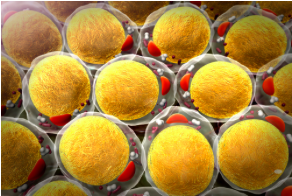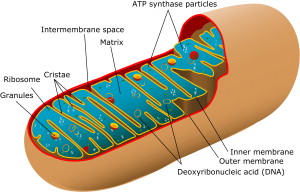The Essentials of Bodypart Specialization: Hamstring and Glute Training
In preparation for writing this article, I wanted to see what exactly was written out on the web when it ...

In preparation for writing this article, I wanted to see what exactly was written out on the web when it ...
When it comes to body composition omega-3s are the top fat to consume. Unfortunately for most we get far too ...
Why Should You be eating Resistant Starch? RS is a starch that when digested in the large intestine, leads to ...
For decades, medical experts and enthusiasts have been nay saying the use of fats. This approach is a result of ...
Post-training is your most insulin sensitive time of day and the time when your body can use carbs the most ...
What you need to know in review: Carbs have a direct effect on the release of insulin Insulin is considered ...
Of the major neurotransmitters, acetylcholine just might be the most important from a muscle building standpoint. As a major neurotransmitter ...
Question: “Is there an optimal amount of Time Under Tension (TUT) to shoot for each set?” When trying to maximize ...
When it comes to body composition omega-3s are the top fat to consume. Unfortunately for most we get far too ...
Post-training is your most insulin sensitive time of day and the time when your body can use carbs the most ...
You have also likely heard of ‘HMB’ which is a derivative of leucine. In fact the above pathway requires that ...
If you’re wondering around the health section at your local grocer, it will be hard not to find a product ...
By Roland Pankewich
Fat loss is the ever-elusive conquest of anyone and everyone who is into health and fitness. Observationally I also think it is one of the most misunderstood and challenging topics for most people to tackle due to the sheer amount of misinformation out there with the added perpetuated myths we have all heard when embarking upon a fat loss journey. To set the record straight, I want to examine the process of fat-loss through the bias of a biochemical perspective.
In biological systems, structure always dictates function, so to understand fat loss properly, we therefore must go down the various theoretical rabbit holes of how this phenomenon happens in the body, and then add practical action items in order to make it “real”.
Put on your propeller hats everyone, he we go!
 Fat loss is fundamentally a catabolic state, which is a term many know from the negative bias in relation to its connection to hypertrophy. The actual definition of catabolic is simply just break-down, and in the human body we must induce this process in order for the body to receive the proper signal to activate all the proper endocrine and metabolic cascades to facilitate fat loss.
Fat loss is fundamentally a catabolic state, which is a term many know from the negative bias in relation to its connection to hypertrophy. The actual definition of catabolic is simply just break-down, and in the human body we must induce this process in order for the body to receive the proper signal to activate all the proper endocrine and metabolic cascades to facilitate fat loss.
Before we get into the details we should understand a little bit about metabolism. Humans are in a constant anabolic/catabolic flux due to metabolic requirements that are unique to certain variables like: age, gender, activity, imposed stress, and overall health status. If we look at it mechanistically, anabolic can represent both good (building muscle) and bad (increasing body fat content). The same goes for catabolic whereas the good side of it could be represented by fat loss but the unfavourable side would be muscle loss.
One of the hallmarks of health optimization is trying to balance the anabolic/catabolic ratio for us as an individual given the above factors. In the case of fat loss, we always want to maximize the catabolic effects of lipolysis but not induce catabolic effects of muscle mass also known as sarcopenia. The details of this will be highlighted later in this series.
 The short answer to the question, “how can I enhance fat loss?” is the word mitochondria, specifically the support and optimization of their function. Although this word may bring back nightmares of high school biology and make you think of the phrase “the power plant of the cell.” Mitochondria are fascinating organelles because modern biochemistry has uncovered some truly amazing roles for these little powerhouses.
The short answer to the question, “how can I enhance fat loss?” is the word mitochondria, specifically the support and optimization of their function. Although this word may bring back nightmares of high school biology and make you think of the phrase “the power plant of the cell.” Mitochondria are fascinating organelles because modern biochemistry has uncovered some truly amazing roles for these little powerhouses.
Starting with the fact that we have between 500 and 2000 per cell and that if we add the total sum of their power potential we as human beings are in fact “a walking lightning bolt” as my mentor Dr. Ted Achacoso says. Mitochondria provide the body with ATP, which is the energy currency that cells use to do work, and the more energy-intensive the job, the more energy (ATP) we require. Mitochondria also play very specific roles in genetic expression via communication with the cell nucleus via free radicals, and also help up-keep the internal status of the cell healthy via nitric oxide production. A new focus of medicine has been around mitochondrial function as the common theme with all diseases and pathology development.
In fact, we see that when the energy status of the cell (ATP production) is compromised, that cell-organ-tissue starts to become dysfunctional. This is why mitochondrial function is absolutely paramount to optimal health AND optimal performance. The other piece of info that will likely peak your interest is that in the entire human body, these cellular powerhouses are the ONLY things able to burn fat for energy. There was a reason I mentioned this point at the end.
So far we know that we have learned that to induce fat loss we need to promote catabolic activity to fat cells and that our mitochondria are the ONLY things that are able to burn fat, therefore we now need to know how this whole process happens!
The next article will outline just how the body uses calories to make energy and give you another piece of the puzzle. Remember that fat doesn’t just vanish, it MUST be metabolized and converted into ATP and this will link mitochondrial function with catabolism of fat cells.